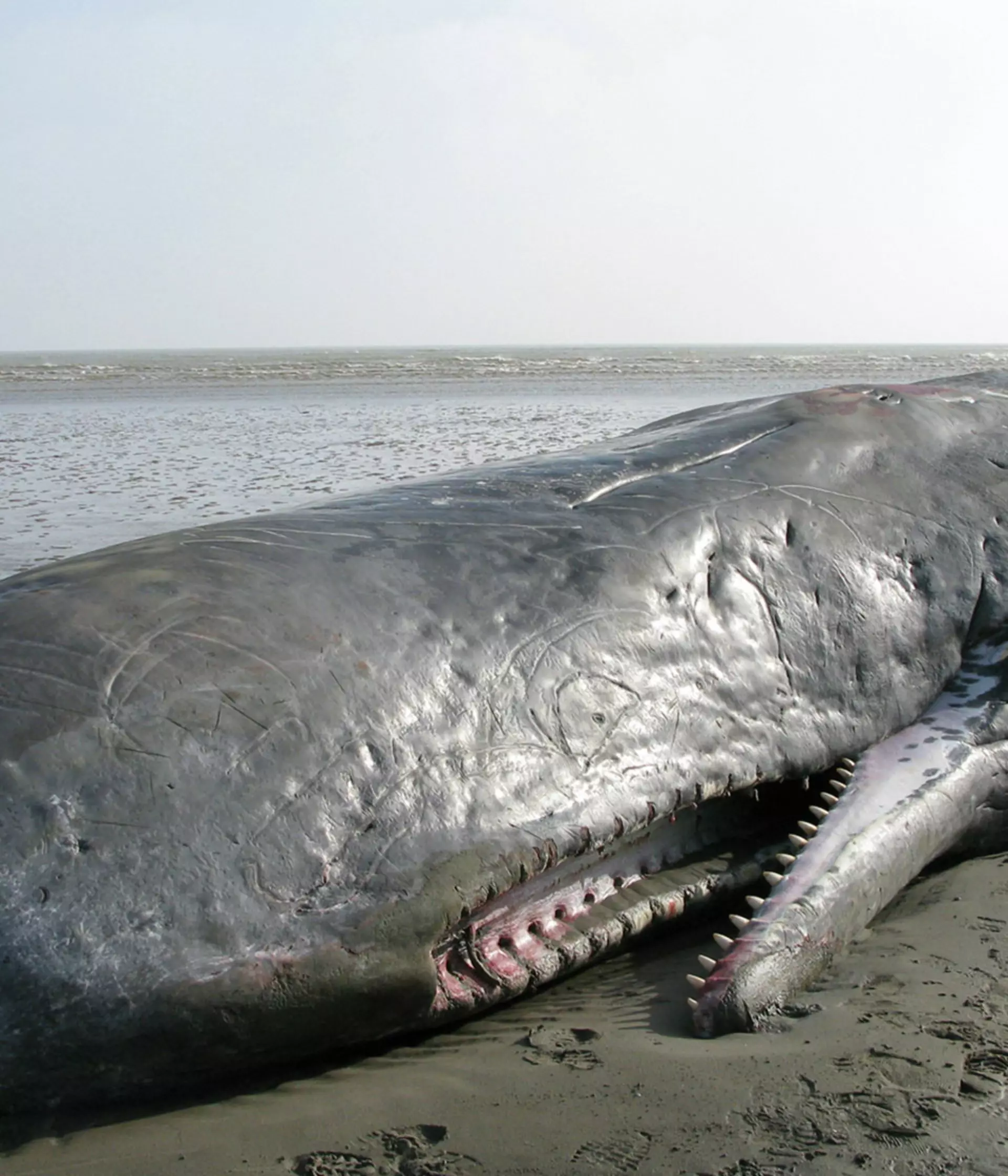
ZSL
Zoological Society of London
No single factor can be blamed for the deaths, but several factors were likely to be at play, say scientists
An international investigation into the strandings of thirty sperm whales (Physeter macrocephalus) in the southern North Sea in 2016 has concluded that the event most probably occurred due to a combination of several complex environmental factors, rather than any single factor.
The whales became stranded across five countries over a period of six weeks in early 2016, after entering the southern North Sea where the water becomes progressively shallower – a known global hotspot for sperm whale strandings.
Teams of international scientists and experts from around Europe came together to investigate this event including ZSL, Utrecht University and University of Veterinary Medicine Hannover, with findings published today, 7 August 2018 in PLOS ONE. Twenty-seven of the thirty sperm whales were examined during the investigation.

The investigation process
Lead Author Lonneke IJsseldijk, from the Faculty of Veterinary Medicine of Utrecht University, the Netherlands said: "We looked at the health status and nutritional condition of each animal. Several infections were found, including parasites and a new herpes virus, but all were deemed to be incidental findings in this large-scale stranding event. Being able to rule out disease as the primary cause of the event makes other causes more likely. So, we continued to investigate and look for different possible causes.
"We found no evidence of manmade trauma due to entanglement or ship-strike, nor was there evidence of significant levels of chemical pollution. In nine examined whales, marine debris (plastic) was also found, but had not caused obstructions of the gastrointestinal tract or starvation and were deemed to be of secondary importance. Marine earthquakes, harmful algal blooms and changes in sea surface temperature were also considered as possible drivers of the series of strandings but were ruled out."
The animals investigated were all young sub-adult males aged between 10 and 16 years old. Dietary studies revealed that the animals had likely foraged for the last time in Norwegian waters, at least 1300 kilometers away.
Why the North Sea?
Why these animals entered the North Sea remains unclear however, due to the lack of information on the timing of the whale’s entry into the region. They typically inhabit deeper waters from the equator to polar regions and the southern North Sea is a highly abnormal habitat for sperm whales, with shallow waters and gradually sloping sandy beaches, making it difficult for this species to navigate effectively.
In addition, their main prey of Boreoatlantic armhook squid (Gonatus fabricii) does not live in the North Sea region, meaning they were unable to feed in this area. The southern North Sea can therefore be considered to act as an effective trap for deep diving species such as the sperm whale and once they enter this area, they face significant risk of live stranding and death.
Co-author Rob Deaville, Project Manager of ZSL’s Cetacean Strandings Investigation Programme (CSIP) said: “Once the whales entered the southern North Sea, they were unfortunately really up against it. As highly specialized deep-water feeders, their biosonar wouldn’t have been able to function effectively in this very shallow region, meaning that unless they found their way back out again, their stranding – in what is effectively an ‘acoustic dead zone’ for deep diving species – would have been inevitable. Although it was impossible to conclusively establish a reason for the animal’s entry into the North Sea region, we’ve still been able to learn a significant amount from this study, one of the most extensive investigations of a sperm whale mortality event that has taken place. This work also highlights the importance of multidisciplinary and collaborative investigations when dealing with transboundary events such as this one.”
Climate change and human activity have altered our precious planet, causing the devastating loss of so many habitats and species. From lab to field, hands on and behind the scenes, we’re leading the future of conservation, shaping agendas and influencing change to support better life, health and living for people and wildlife.
